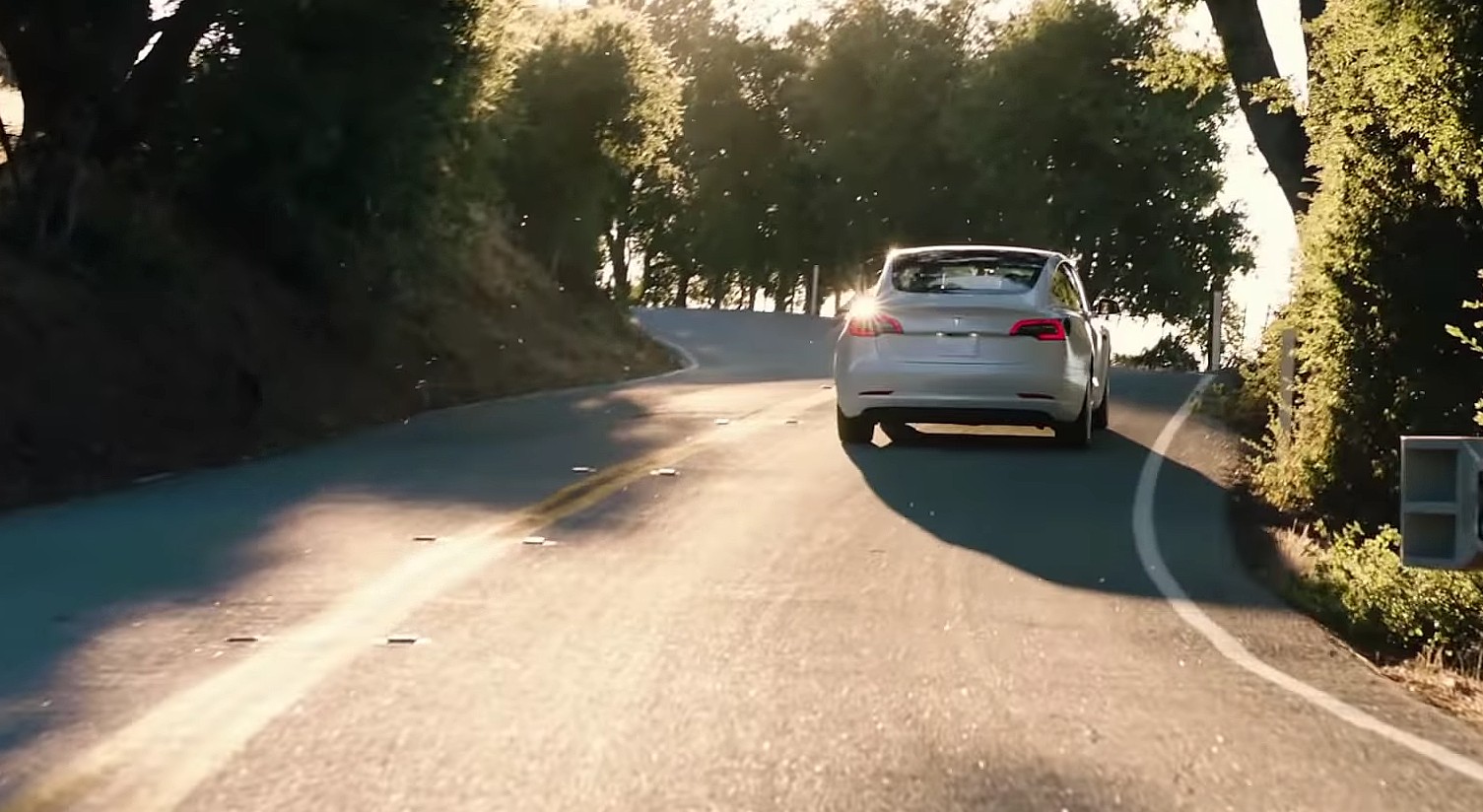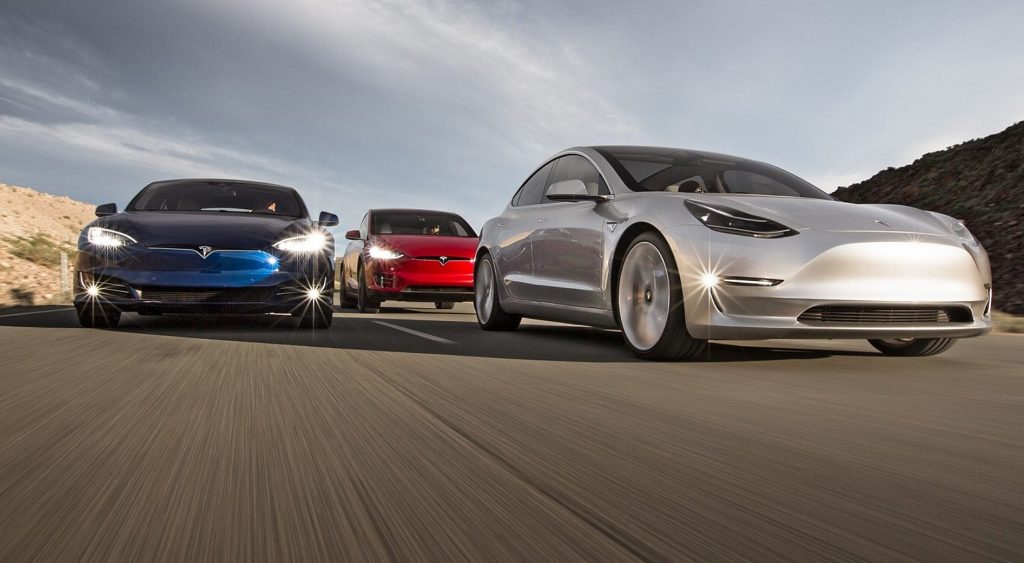

News
Tesla’s disruption is making Germany’s elite automakers very tense about the future
There was once a time when Germany’s largest automakers looked on with amusement as Tesla, a small Silicon Valley electric car maker, purchased a gigantic car factory in Fremont, CA to produce its first ground-up premium sedan. Today, amidst the Model 3’s disruption and the impending arrival of the Model Y, it appears that no one in Das Auto is laughing anymore.
Electrification is something that used to be scoffed at, especially among the industry’s serious players. When Tesla was starting out, the transportation sector was still fully committed to the internal combustion engine. And in this era, Germany’s elite three — Daimler, Volkswagen, and BMW — reigned supreme. Their vehicles were sought after, and they were known for their power and pedigree. That was, at least, until upstart companies such as Tesla entered the picture.
Tesla represented everything that legacy auto was not. Instead of relying fully on a vast dealer network, Tesla sold its cars on its own. Instead of relying on a network of suppliers, Tesla adopted a vertically-integrated model. Instead of spamming its cars with all the plush amenities found in traditional luxury cars, Tesla’s EVs were spartan and minimalistic. These little differences, coupled with the fact that its vehicles are unlike any other on the road in terms of performance and tech, made the electric car maker a brand to watch among consumers looking to purchase a vehicle.

What really makes Tesla a pretty concerning opponent is the company’s dedication to its mission — to accelerate the advent of sustainability. This means that the company is about so much more than just profits. It’s a company that is legitimately trying its best to change the world, and it is beckoning everyone for support. And support it has gained. Among automakers, Tesla currently stands supreme according to social media presence. Today, the Model 3 is outselling mainstays like the BMW M3, and the arrival of the Model Y could end up disrupting a market previously held by cars like the Porsche Macan.
Today, Tesla stands as a leader in the EV market, with vehicles that have advanced driver-assist features such as Autopilot, a Full Self-Driving suite that includes capabilities like Smart Summon, and a system that constantly improves through free over-the-air updates. With these, Tesla’s electric cars such as the Model S and Model 3 have dominated their respective EV segments.
So how did Tesla end up disrupting the market even if Das Auto had all the resources all along to beat Tesla at its own game years ago? Perhaps it’s hubris, or maybe it was simply an honest mistake. Nevertheless, Tesla has now reached a point where it would be very difficult to reach and overtake, especially when it comes to the tech and batteries of its vehicles. This was highlighted when Volkswagen reportedly got its hands on a Mid Range Tesla Model 3. After tearing down the vehicle, the veteran automaker was reportedly shocked at how advanced the vehicle was.

Sajjad Khan, a Pakistani-born Daimler executive who is a member of the divisional board for CASE (Connected, Autonomous, Shared, Electric) at Mercedes-Benz, believes that this does not need to be the case. In a recent town hall meeting, Khan told an audience that the time is nigh for Germany’s auto sector to get a wake-up call.
“We need a wake-up call. We have to change fundamentally — as individuals, as departments, as a company, as a country. If we don’t, we’re going to be facing tough times ahead. We need to rebuild the mentality that made the economic miracle (in postwar Germany) possible. And we can’t wait until we have fallen on our faces to do this,” he said.
Fortunately, it may be too premature to dismiss Germany’s veteran automakers and their EV efforts. Porsche proved to the world that it can match and perhaps even exceed the performance of Tesla’s flagship sedan with the Taycan, though it had to make do with significantly less range and a far higher price. Volkswagen, for its part, is spending large amounts in its efforts to produce electric vehicles. The company is looking to conduct its ramp quickly, to the point where it would no longer sell diesel and gasoline cars by 2040.
That’s what one could call the end of an era.

Elon Musk
Elon Musk and Tesla AI Director share insights after empty driver seat Robotaxi rides
The executives’ unoccupied tests hint at the rapid progress of Tesla’s unsupervised Robotaxi efforts.

Tesla CEO Elon Musk and AI Director Ashok Elluswamy celebrated Christmas Eve by sharing personal experiences with Robotaxi vehicles that had no safety monitor or occupant in the driver’s seat. Musk described the system’s “perfect driving” around Austin, while Elluswamy posted video from the back seat, calling it “an amazing experience.”
The executives’ unoccupied tests hint at the rapid progress of Tesla’s unsupervised Robotaxi efforts.
Elon and Ashok’s firsthand Robotaxi insights
Prior to Musk and the Tesla AI Director’s posts, sightings of unmanned Teslas navigating public roads were widely shared on social media. One such vehicle was spotted in Austin, Texas, which Elon Musk acknowleged by stating that “Testing is underway with no occupants in the car.”
Based on his Christmas Eve post, Musk seemed to have tested an unmanned Tesla himself. “A Tesla with no safety monitor in the car and me sitting in the passenger seat took me all around Austin on Sunday with perfect driving,” Musk wrote in his post.
Elluswamy responded with a 2-minute video showing himself in the rear of an unmanned Tesla. The video featured the vehicle’s empty front seats, as well as its smooth handling through real-world traffic. He captioned his video with the words, “It’s an amazing experience!”
Towards Unsupervised operations
During an xAI Hackathon earlier this month, Elon Musk mentioned that Tesla owed be removing Safety Monitors from its Robotaxis in Austin in just three weeks. “Unsupervised is pretty much solved at this point. So there will be Tesla Robotaxis operating in Austin with no one in them. Not even anyone in the passenger seat in about three weeks,” he said. Musk echoed similar estimates at the 2025 Annual Shareholder Meeting and the Q3 2025 earnings call.
Considering the insights that were posted Musk and Elluswamy, it does appear that Tesla is working hard towards operating its Robotaxis with no safety monitors. This is quite impressive considering that the service was launched just earlier this year.
Elon Musk
Starlink passes 9 million active customers just weeks after hitting 8 million
The milestone highlights the accelerating growth of Starlink, which has now been adding over 20,000 new users per day.

SpaceX’s Starlink satellite internet service has continued its rapid global expansion, surpassing 9 million active customers just weeks after crossing the 8 million mark.
The milestone highlights the accelerating growth of Starlink, which has now been adding over 20,000 new users per day.
9 million customers
In a post on X, SpaceX stated that Starlink now serves over 9 million active users across 155 countries, territories, and markets. The company reached 8 million customers in early November, meaning it added roughly 1 million subscribers in under seven weeks, or about 21,275 new users on average per day.
“Starlink is connecting more than 9M active customers with high-speed internet across 155 countries, territories, and many other markets,” Starlink wrote in a post on its official X account. SpaceX President Gwynne Shotwell also celebrated the milestone on X. “A huge thank you to all of our customers and congrats to the Starlink team for such an incredible product,” she wrote.
That growth rate reflects both rising demand for broadband in underserved regions and Starlink’s expanding satellite constellation, which now includes more than 9,000 low-Earth-orbit satellites designed to deliver high-speed, low-latency internet worldwide.
Starlink’s momentum
Starlink’s momentum has been building up. SpaceX reported 4.6 million Starlink customers in December 2024, followed by 7 million by August 2025, and 8 million customers in November. Independent data also suggests Starlink usage is rising sharply, with Cloudflare reporting that global web traffic from Starlink users more than doubled in 2025, as noted in an Insider report.
Starlink’s momentum is increasingly tied to SpaceX’s broader financial outlook. Elon Musk has said the satellite network is “by far” the company’s largest revenue driver, and reports suggest SpaceX may be positioning itself for an initial public offering as soon as next year, with valuations estimated as high as $1.5 trillion. Musk has also suggested in the past that Starlink could have its own IPO in the future.
News
NVIDIA Director of Robotics: Tesla FSD v14 is the first AI to pass the “Physical Turing Test”
After testing FSD v14, Fan stated that his experience with FSD felt magical at first, but it soon started to feel like a routine.

NVIDIA Director of Robotics Jim Fan has praised Tesla’s Full Self-Driving (Supervised) v14 as the first AI to pass what he described as a “Physical Turing Test.”
After testing FSD v14, Fan stated that his experience with FSD felt magical at first, but it soon started to feel like a routine. And just like smartphones today, removing it now would “actively hurt.”
Jim Fan’s hands-on FSD v14 impressions
Fan, a leading researcher in embodied AI who is currently solving Physical AI at NVIDIA and spearheading the company’s Project GR00T initiative, noted that he actually was late to the Tesla game. He was, however, one of the first to try out FSD v14.
“I was very late to own a Tesla but among the earliest to try out FSD v14. It’s perhaps the first time I experience an AI that passes the Physical Turing Test: after a long day at work, you press a button, lay back, and couldn’t tell if a neural net or a human drove you home,” Fan wrote in a post on X.
Fan added: “Despite knowing exactly how robot learning works, I still find it magical watching the steering wheel turn by itself. First it feels surreal, next it becomes routine. Then, like the smartphone, taking it away actively hurts. This is how humanity gets rewired and glued to god-like technologies.”
The Physical Turing Test
The original Turing Test was conceived by Alan Turing in 1950, and it was aimed at determining if a machine could exhibit behavior that is equivalent to or indistinguishable from a human. By focusing on text-based conversations, the original Turing Test set a high bar for natural language processing and machine learning.
This test has been passed by today’s large language models. However, the capability to converse in a humanlike manner is a completely different challenge from performing real-world problem-solving or physical interactions. Thus, Fan introduced the Physical Turing Test, which challenges AI systems to demonstrate intelligence through physical actions.
Based on Fan’s comments, Tesla has demonstrated these intelligent physical actions with FSD v14. Elon Musk agreed with the NVIDIA executive, stating in a post on X that with FSD v14, “you can sense the sentience maturing.” Musk also praised Tesla AI, calling it the best “real-world AI” today.








